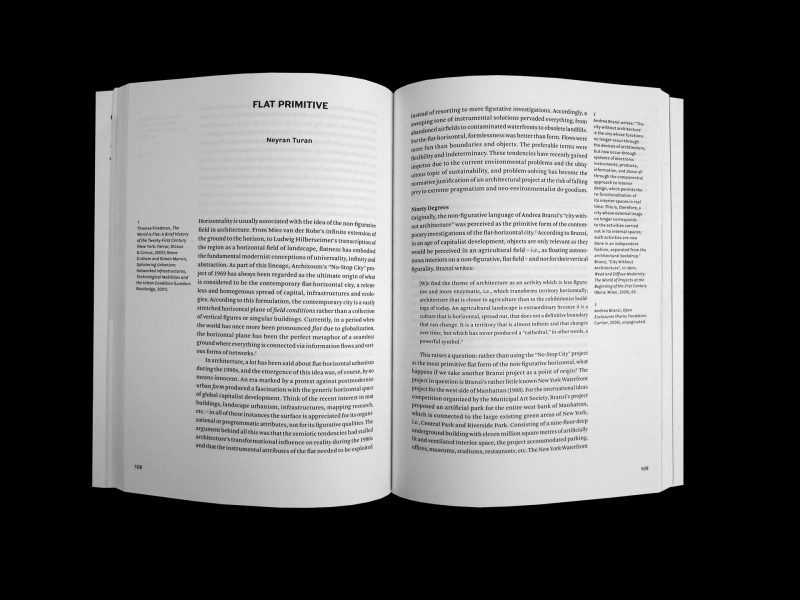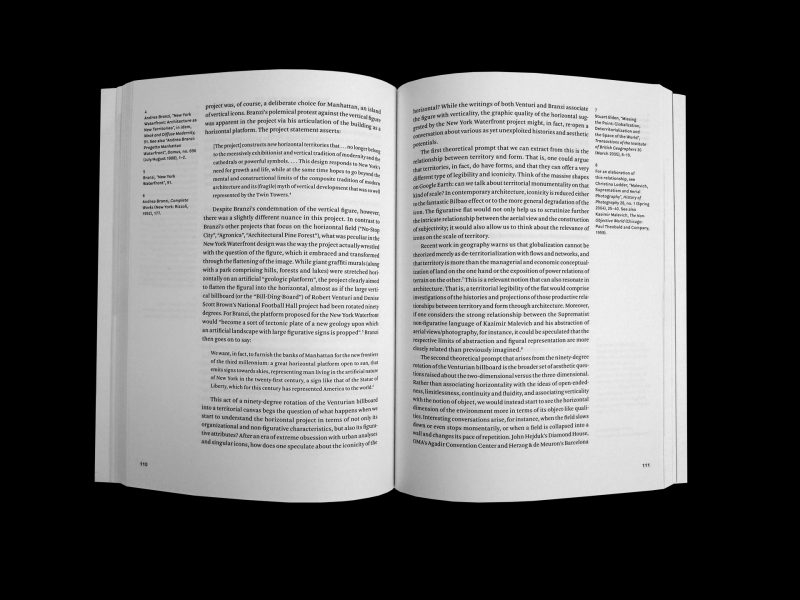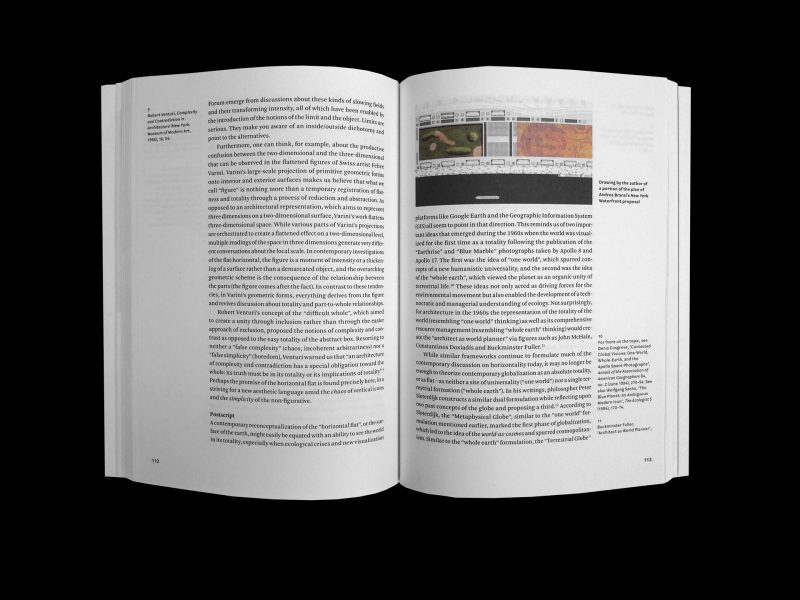Horizontality is usually associated with the idea of the non-figurative field in architecture. From Mies van der Rohe's infinite extension of the ground to the horizon, to Ludwig Hilberseimer's transcription of the region as a horizontal field of landscape, flatness has embodied the fundamental modernist conceptions of universality, infinity and abstraction. As part of this lineage, Archizoom's “No-Stop City" project of 1969 has always been regarded as the ultimate origin of what is considered to be the contemporary flat-horizontal city, a relentless and homogenous spread of capital, infrastructures and ecologies. According to this formulation, the contemporary city is a vastly stretched horizontal plane of field conditions rather than a collection of vertical figures or singular buildings.
In architecture, a lot has been said about flat-horizontal urbanism during the 1990s, and the emergence of this idea of course was by no means innocent. An era marked by a protest against postmodernist urban form produced a fascination with the generic horizontal space of global capitalist development. Think of the recent interest in mat buildings, landscape urbanism, infrastructures, mapping research, etc. – in all of these instances the surface is appreciated for its organizational or programmatic attributes, not for its figurative qualities. The argument behind all this was that the semiotic tendencies had stalled architecture's transformational influence on reality during the 1980s and that the instrumental attributes of the flat needed to be exploited instead of resorting to mere figurative investigations….For the flat-horizontal, formlessness was better than form. Flows were more fun than boundaries and objects. The preferable terms were flexibility and indeterminacy. These tendencies have recently gained impetus due to the current environmental problems and the ubiquitous topic of sustainability, and problem-solving has become the normative justification of an architectural project at the risk of falling prey to extreme pragmatism and neo-environmentalist do-goodism.
Originally, the non-figurative language of Andrea Branzi's “city without architecture" was perceived as the primitive form of the contemporary investigations of the flat-horizontal city. Rather than using the No-Stop City project as the most primitive flat form of the non-figurative horizontal, what happens if we take another Branzi project as a point of origin?



